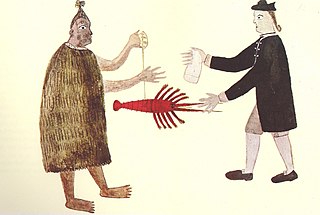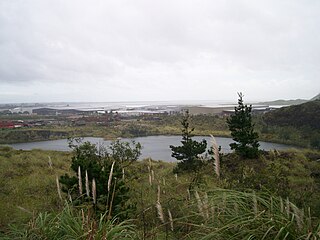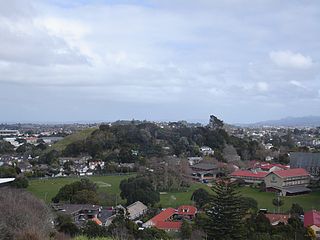Related Research Articles

Māori, or te reo Māori, commonly shortened to te reo, is an Eastern Polynesian language and the indigenous language of the Māori people, the indigenous population of mainland New Zealand. A member of the Austronesian language family, it is closely related to Cook Islands Māori, Tuamotuan, and Tahitian. The Maori Language Act 1987 gave the language recognition as one of New Zealand's official languages along side New Zealand Sign Language which was added as an Official language in New Zealand in 2006. There are several regional dialects of the language, all of which are mutually intelligible. Speakers of the Māori language may be called kaikōrero Māori in both English and Māori.

The Treaty of Waitangi, sometimes referred to as Te Tiriti, is a document of central importance to the history of New Zealand, its constitution, and its national mythos. It has played a major role in the treatment of the Māori people in New Zealand by successive governments and the wider population, something that has been especially prominent from the late 20th century. The treaty document is an agreement, not a treaty as recognised in international law, and has no independent legal status, being legally effective only to the extent it is recognised in various statutes. It was first signed on 6 February 1840 by Captain William Hobson as consul for the British Crown and by Māori chiefs from the North Island of New Zealand.

Tino rangatiratanga is a Māori language term that translates literally to 'highest chieftainship' or 'unqualified chieftainship', but is also translated as "self-determination", "sovereignty" and "absolute sovereignty". The very translation of tino rangatiratanga is important to New Zealand politics, as it is used in the Māori version of the Treaty of Waitangi to express "full exclusive and undisturbed possession" over Māori-owned lands and property, but different translations have drastically different implications for the relationship between the 1840 signatories: the British Crown and the Māori chiefs (rangatira).
Taonga or taoka is a Māori-language word that refers to a treasured possession in Māori culture. It lacks a direct translation into English, making its use in the Treaty of Waitangi significant. The current definition differs from the historical one, noted by Hongi Hika as "property procured by the spear" [one could understand this as war booty or defended property] and is now interpreted to mean a wide range of both tangible and intangible possessions, especially items of historical cultural significance.
Claims and settlements under the Treaty of Waitangi have been a significant feature of New Zealand politics since the Treaty of Waitangi Act 1975 and the Waitangi Tribunal that was established by that act to hear claims. Successive governments have increasingly provided formal legal and political opportunity for Māori to seek redress for what are seen as breaches by the Crown of guarantees set out in the Treaty of Waitangi. While it has resulted in putting to rest a number of significant longstanding grievances, the process has been subject to criticisms including those who believe that the redress is insufficient to compensate for Māori losses. The settlements are typically seen as part of a broader Māori Renaissance.
Kaitiakitanga is a New Zealand Māori term used for the concept of guardianship of the sky, the sea, and the land. A kaitiaki is a guardian, and the process and practices of protecting and looking after the environment are referred to as kaitiakitanga.

Ōhinerau / Mount Hobson is a 143 m high volcanic cone and Tūpuna Maunga in the Auckland volcanic field in Auckland, New Zealand.

The Te Ture Whenua Māori Act 1993 is a statute of the Parliament of New Zealand to "reform the laws relating to Māori land in accordance with the principles set out in the Preamble". These principles "reaffirm" the Treaty of Waitangi "relationship between the Māori people and the Crown" and "recognise that land is taonga tuku iho of special significance to Māori people". To that end, the principles "promote the retention of ... land in the hands of its owners, their whanau, and their hapu, and to protect wahi tapu". Further, they "facilitate the occupation, development, and utilisation of that land for the benefit of its owners, their whanau, and their hapu".
The law of New Zealand uses the English common law system, inherited from being a part of the British Empire.
The New Zealand Geographic Board Ngā Pou Taunaha o Aotearoa (NZGB) has authority over geographical and hydrographic names within New Zealand and its territorial waters. This includes the naming of small urban settlements, localities, mountains, lakes, rivers, waterfalls, harbours and natural features and may include researching local Māori names. It has named many geographical features in the Ross Sea region of Antarctica. It has no authority to alter street names or the name of any country.

Mount Smart is one of the volcanoes and Tūpuna Maunga in the Auckland volcanic field. A century of quarrying removed almost all the 87 meter scoria cone along with extensive terracing excavated by Māori. The former quarry is now the site of Mount Smart Stadium.

Māori are the indigenous Polynesian people of mainland New Zealand. Māori originated with settlers from East Polynesia, who arrived in New Zealand in several waves of canoe voyages between roughly 1320 and 1350. Over several centuries in isolation, these settlers developed their own distinctive culture, whose language, mythology, crafts, and performing arts evolved independently from those of other eastern Polynesian cultures. Some early Māori moved to the Chatham Islands, where their descendants became New Zealand's other indigenous Polynesian ethnic group, the Moriori.

Matukutūruru is a volcano and Tūpuna Maunga in Wiri, in the Auckland volcanic field. It had a scoria cone reaching 80 metres above sea level, which was quarried away. The lava flows created 290m long Wiri Lava Cave. The hill was the site of a pā. In late 2011 the quarry lake was drained and fill-dumping began on the site.

Ōtāhuhu / Mount Richmond is volcanic peak and Tūpuna Maunga in the Auckland volcanic field. A group of scoria mounds up to 48 m high, it has two 50 m wide craters. It was the site of a pā, and retains some Māori earthworks from that time such as kumara pits and terracing.

Mount Saint John, is a volcanic scoria cone and Tūpuna Maunga in Epsom, in the Auckland volcanic field of New Zealand.
The New Zealand Māori Council is a body that represents and consults the Māori people of New Zealand. As one of the oldest Māori representative groups, the council exerts pressure on New Zealand governments to protect Treaty of Waitangi rights.

The judiciary of New Zealand is responsible for the system of courts that interprets and applies the laws of New Zealand. It has four primary functions: to provide a mechanism for dispute resolution; to deliver authoritative rulings on the meaning and application of legislation; to develop case law; and to uphold the rule of law, personal liberty and human rights. The judiciary is supported in its work by an executive department, the Ministry of Justice.

David Breen Seymour is a New Zealand politician. Ideologically a libertarian conservative, he is the leader of ACT New Zealand and the Member of Parliament (MP) for Epsom. He currently serves as the Minister for Regulation in the Sixth National Government of New Zealand.

In New Zealand law and politics, the principles of the Treaty of Waitangi is a phrase used in the Treaty of Waitangi Act 1975. It is a set of principles derived from, and interpreting, the Treaty of Waitangi. These principles were codified in 1987, partly an attempt to reconcile the different Māori and English language versions of the treaty, and allow the application of the treaty to a contemporary context.
Co-governance in New Zealand consists of various negotiated arrangements where Māori people and the Crown share decision-making, or Māori exercise a form of self-determination through a devolution of state power. Notable examples include the co-management of natural resources as part of the provision of Māori social services by Māori-focused entities, and statutory Māori representation in local government bodies. In addition Treaty of Waitangi settlements from 2008 often had co-governance agreements where the iwi involved worked with significant rivers, watersheds, coastlines and landmarks.
References
- ↑ "ACT launches Treaty Principles Bill information campaign". RNZ. 7 February 2024. Retrieved 5 April 2024.
- ↑ "Treaty Principles Bill" . Retrieved 5 April 2024.